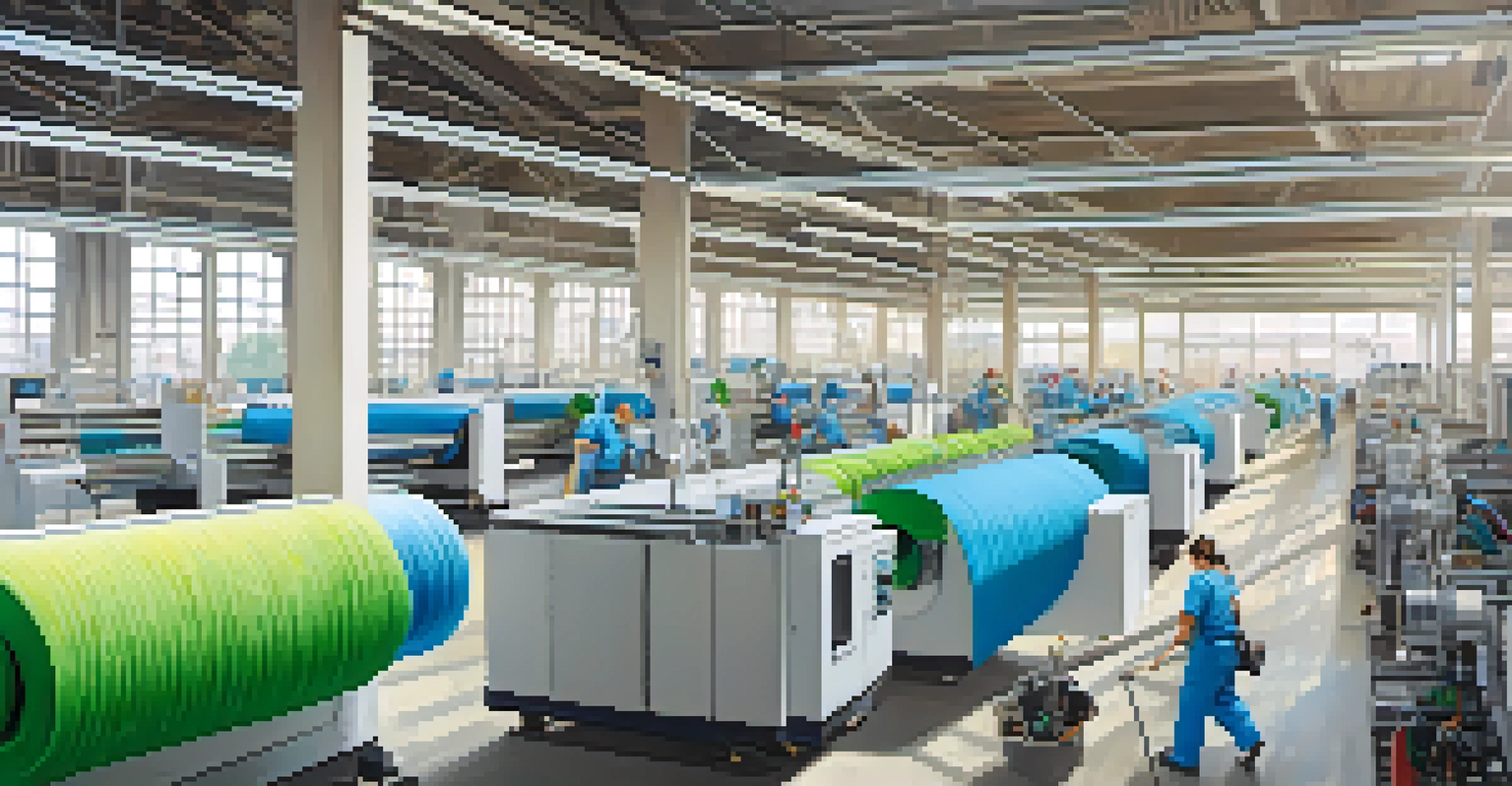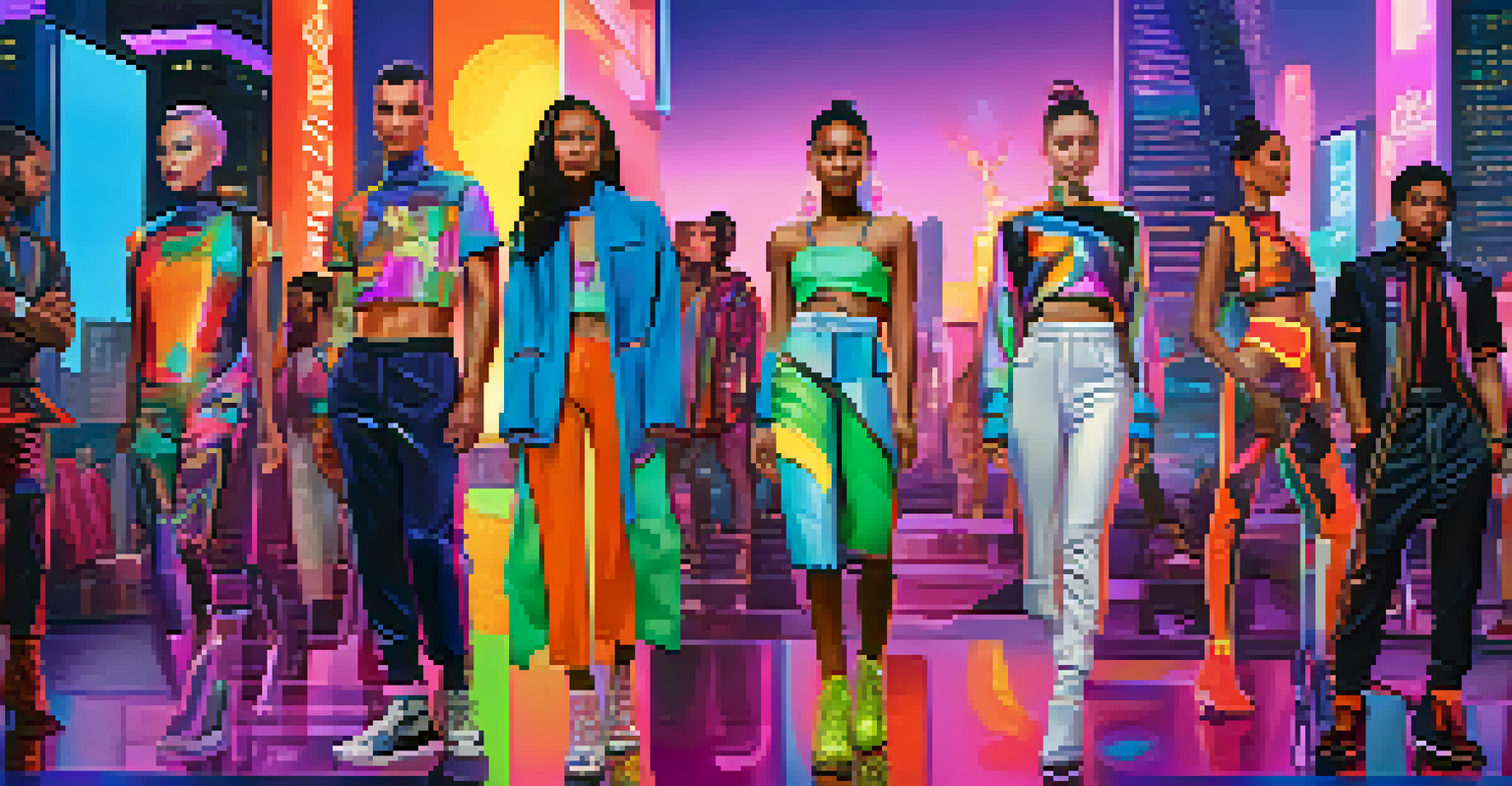Sustainable Fashion: Technology's Role in Eco-Friendly Practices

Understanding Sustainable Fashion and Its Importance
Sustainable fashion refers to clothing and accessories produced with a focus on environmental and social responsibility. This movement aims to reduce the negative impact of the fashion industry, which is notorious for its waste and pollution. By embracing sustainable practices, we can help protect our planet and promote ethical labor conditions.
Fashion is about dreaming and making other people dream. But we have to make sure that our dreams are sustainable.
The importance of sustainable fashion cannot be overstated; it addresses critical issues like textile waste, excessive water usage, and the carbon footprint of production. For instance, the production of a single cotton shirt can require over 2,700 liters of water, enough for one person to drink for two and a half years. By shifting towards eco-friendly practices, we can significantly reduce these environmental impacts.
Related Resource
Furthermore, sustainable fashion encourages consumers to rethink their purchasing habits, considering the lifecycle of their clothing. This shift not only promotes a healthier planet but also supports a growing market for ethical brands, fostering innovation and creativity in fashion design.
How Technology is Revolutionizing Fashion Sustainability
Technology plays a pivotal role in advancing sustainable fashion by streamlining production processes and minimizing waste. Innovations like 3D printing and digital textile printing enable designers to create items with precision, reducing excess material. This shift not only conserves resources but also allows for greater customization, meeting consumer demand for unique pieces.

Moreover, technology facilitates better supply chain transparency, allowing consumers to trace the origins of their garments. Blockchain technology, for example, can track the entire lifecycle of a product, from raw materials to retail. This information empowers consumers to make informed choices and supports brands that prioritize ethical practices.
Sustainable Fashion Benefits the Planet
Sustainable fashion focuses on reducing waste, water usage, and carbon footprints, making a significant positive impact on the environment.
In addition, the rise of artificial intelligence (AI) in fashion helps brands predict trends and manage inventory more effectively. By using data analytics, companies can produce only what is needed, minimizing overproduction and waste. This intelligent approach is a game-changer for the industry, aligning profitability with sustainability.
Innovative Materials: The Future of Eco-Friendly Fashion
The development of innovative materials is another crucial aspect of sustainable fashion. Brands are now exploring alternatives to traditional fabrics, such as organic cotton, hemp, and even materials made from recycled plastics. For instance, some companies are creating textiles from ocean waste, transforming plastic debris into fashionable clothing.
Sustainability is not a trend; it’s a responsibility. And every little bit helps.
Additionally, advancements in biotechnology have led to the creation of lab-grown materials, such as mycelium leather, which mimics the look and feel of animal leather without the environmental toll. These sustainable materials not only reduce dependence on resource-intensive processes but also challenge the status quo of fashion production.
Related Resource
As consumers become more environmentally conscious, the demand for eco-friendly materials continues to rise. Brands that invest in sustainable materials not only appeal to this growing market but also position themselves as leaders in the movement towards a greener fashion industry.
The Role of E-Commerce in Sustainable Fashion
E-commerce platforms are reshaping how we shop for sustainable fashion, making it easier for consumers to find eco-friendly options. Online marketplaces dedicated to sustainable brands showcase a wide range of products, from clothing to accessories, all in one place. This accessibility fosters a community of conscious consumers who prioritize ethical purchasing.
Additionally, e-commerce allows for greater transparency in brand practices. Many online retailers provide detailed information about a product's origin, materials, and manufacturing processes, helping consumers make informed choices. This level of transparency is increasingly important as shoppers seek to align their values with their purchases.
Technology Enhances Fashion Sustainability
Innovations like 3D printing and AI help streamline production and manage inventory, minimizing waste while promoting eco-friendly practices.
Furthermore, the rise of second-hand and rental platforms has revolutionized the fashion industry. These services promote a circular economy by extending the lifecycle of garments, reducing waste, and encouraging a more sustainable approach to fashion consumption. As a result, consumers are not only reducing their environmental impact but also discovering unique, pre-loved pieces.
Embracing Digital Fashion: Virtual Clothing and Avatars
Digital fashion is an exciting frontier that represents a shift towards sustainability by reducing physical production. Virtual clothing, designed for avatars in gaming and social media, allows consumers to express their style without creating waste. This innovative approach opens up new possibilities for self-expression while minimizing the environmental footprint.
Brands are already embracing digital fashion, launching collections that exist solely in the virtual realm. For instance, some high-profile designers have created digital garments that can be purchased and worn in online environments, reducing the need for physical production. This trend not only appeals to tech-savvy consumers but also aligns with the growing interest in sustainable practices.
Related Resource
Moreover, the rise of augmented reality (AR) technology enables customers to try on clothing virtually, enhancing the online shopping experience. By allowing consumers to see how items look on them before making a purchase, AR reduces the likelihood of returns, which contributes to waste in the fashion industry. This integration of technology and fashion offers an exciting glimpse into a more sustainable future.
The Impact of Social Media on Sustainable Fashion Awareness
Social media has become a powerful tool for raising awareness about sustainable fashion. Influencers and activists use platforms like Instagram and TikTok to share their commitment to eco-friendly practices, inspiring their followers to join the movement. This grassroots approach fosters a sense of community and encourages discussions about sustainability in fashion.
Additionally, brands leverage social media to showcase their sustainable initiatives, highlighting transparent practices and ethical sourcing. By sharing behind-the-scenes stories and educating consumers, they build trust and loyalty among their audience. This transparency not only attracts conscious consumers but also sets a standard for others in the industry.
E-Commerce Fuels Ethical Shopping
Online platforms provide easy access to sustainable brands and promote transparency, encouraging consumers to make informed and responsible fashion choices.
Moreover, social media campaigns can drive significant engagement and action. Hashtags like #SustainableFashion and #SlowFashion have gained momentum, encouraging users to share their sustainable choices and support eco-friendly brands. This collective effort amplifies the message of sustainability and motivates more people to rethink their fashion habits.
Challenges and the Future of Sustainable Fashion Technology
Despite the advancements in technology and sustainable practices, challenges remain in the fashion industry. One significant hurdle is the balance between profitability and sustainability. Many brands struggle to implement eco-friendly practices without increasing costs, which can deter them from making necessary changes.
Additionally, consumer awareness and education are crucial for the success of sustainable fashion. While interest in eco-friendly practices is growing, not all consumers are informed about the impact of their choices. Brands must invest in educational initiatives to help consumers understand the importance of sustainability and encourage them to make responsible purchasing decisions.

Looking ahead, the future of sustainable fashion relies on continued innovation and collaboration within the industry. By embracing new technologies, fostering partnerships, and prioritizing sustainability, brands can create a more eco-friendly fashion landscape. Together, we can pave the way for a fashion industry that values both style and the planet.